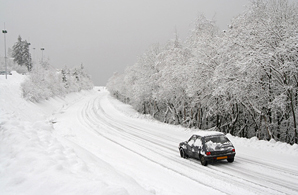
iStockphoto | Thinkstock
“Neither rain, nor snow, nor sleet, nor hail shall keep nurses from their appointed rounds.”
Oh wait—that was supposed to be postmen, wasn’t it? One could argue that it’s really nurses who end up driving in all sorts of weather that even letter carriers wouldn’t dare tackle. Even in the dead of winter there are patients to care for and nurses to be relieved.
So, if you’re one of the unlucky nurses who has to venture out in less than ideal driving conditions, here are some winter driving safety tips.
1. Be Prepared.
While this seems obvious, it’s amazing how many people are surprised by winter’s arrival—every single year. We know that nurses are busy and juggling shift work, family and even sleep (remember that?), but we have to keep our cars ready and safe for winter driving. That means:
â—Â Â Â Â A full mechanical checkup, checking the fluids (including windshield wiper fluid), brakes, heat and defrost system, lights, etc.
â—Â Â Â Â Winter tires (different from snow tires, these are for winter in particular). Despite what manufacturers tell you, if your winter temperature drops below 44 degrees, you need winter tires. They are made of a softer rubber that helps grip the ice. All-season tires do not have this ability.
â—Â Â Â Â Snow chains or studs if you live in areas where they are required and legal
â—Â Â Â Â Winter wipers for your windows

















